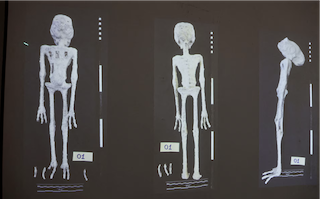In 2017, ufologist Jaime Maussan claimed the discovery of dozens of mummified bodies in the Nazca desert of Peru. Specimens with three elongated fingers and toes, as well as elongated skulls, garnered particular attention. These findings quickly caused a sensation in ufological circles, where they were hailed as evidence of extraterrestrial civilizations, particularly as representatives of the Tridactyl species.
Proponents of the alien theory point to the unusual anatomy of the bodies, which differs from that of humans. However, the scientific community has met these claims with skepticism. Conducted research, including DNA analysis and radiocarbon dating, has yielded conflicting results. Some reports suggest possible human intervention in the creation of these mummies, using bone fragments from humans and animals.
Notably, research conducted in 2025 confirmed previous findings that the mummy known as "Maria" is actually a male individual and possesses a mitochondrial haplogroup found in humans. Other analyses have revealed traces of glue and other substances, indicating possible fabrication.
Despite this, proponents of the extraterrestrial theory continue to insist on the non-terrestrial origin of the mummies, arguing that some anomalies cannot be explained by earthly factors. The debate surrounding the Nazca mummies continues, and a definitive answer to the question of their origin has yet to be found.
In this article, we have explored both sides of this discussion, so that everyone can form their own opinion based on the available facts.
